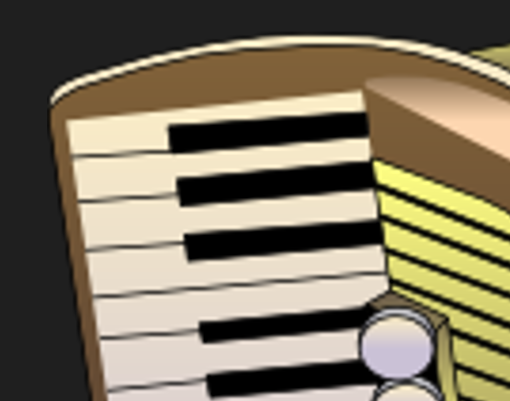Creating A SVG Viewer from the ground up
In the series I did last summer (Hello Scene), I walked through the fundamentals of creating a simple graphics system, from the ground up. Putting a window on the screen, setting pixels, drawing, text, visual effects, screen captures, and all that. Along the way, I discussed various design choices and tradeoffs that I made while creating the code.
While capturing screenshots, and flipping some bits might make for a cool demo, at the end of the day, I need to create actual applications that are: robust, performant, functional, and a delight for the user to use. A lot of what we see today are “web apps”, that is, things that are created to be run in a web browser. Web Apps have a lot of HTML, CSS, Javascript, and are programmed with myriad frameworks, in multiple languages on the front end and backend. It a whole industry out there!
One question arises for me though, and perhaps a bit of envy. Why do those web apps have to look so great, with their fancy gradients, shadows, and animations, whereas my typical applications look like they’re stuck in a late 2000 computer geek movie. I’m talking about desktop apps, and why they haven’t changed much in the past 20 years. Maybe we get a splash here and there with some changes in icon styles (shardows, transparency, flat, ‘dark’), but really, the rest of the app looks and feels the same. No animations, no fancy pictures, everything is square, just no fun.
Well, to this point, I’ve been on a mission to create more engaging desktop app experiences, and it starts with the graphics. To that end, I looked out into the world and saw that SVG (Scalable Vector Graphics) would be a great place to start. Vector graphics are great. The other form of graphics are ‘bitmap’. Bitmap graphics are the realm of file formats such as ‘png’, ‘jpeg’, ‘gif’, ‘webp’, and the like. As the name implies, a ‘bitmap’ is just a bunch of dots of color in a square. There are a couple of challenges with bitmap graphics. One is that when you scale them, the thing starts to look “pixelated”. You know, they get the ‘jaggies’, and they just don’t look that great.
The second challenge you have is that the image is static. You don’t know where the keys on that keyboard are located, so being able to push them, or have them reflect music that’s playing, is quite a hard task.
In steps vector graphics. Vector Graphics contain the original drawing commands that are used to create a bitmap, at any size. With a vector graphics file, you can retain the information about colors, locations, geometry, everything that went into creating the image. This means that you can locate individual elements, name them, change them during the application, and so on.
Why don’t we just use vector graphics all the time then? Honestly, I really don’t know. I do know that one impediment to using them is being able to parse the format, and do something meaningful with it. To date, you mostly find support for SVG in web browsers, where they’re already parsing this kind of data. In that environment, you have full access to all those annotations, and furthermore, you can attach javascript code the various actions, like mouse hovering, clicking, dragging and the like. But, for the most part, desktop applications don’t participate in that world. Instead, we’re typically stuck with bitmap graphics and clunky UI builders.
To change that, the first step is parsing the .svg file format. Lucky for me, SVG is based on XML, which is the first thing I worked on at Microsoft back in 1998. I never actually wrote the parser (worked on XSLT originally), but I’m super familiar with it. So, that’s where to start.
In this series, I’m going to write a functional SVG parser, which will be capable of generating SVG based bitmap images, as well as operate in an application development environment for desktop apps. I will be using the blend2d graphics library to do all the super heavy lifting of rendering the actual images, but I will focus on what goes into writing the parser, and seamlessly integrating the results into useful desktop applications.
So, follow along over the next few installments to see how it’s done.


